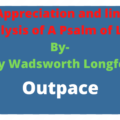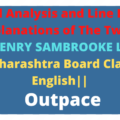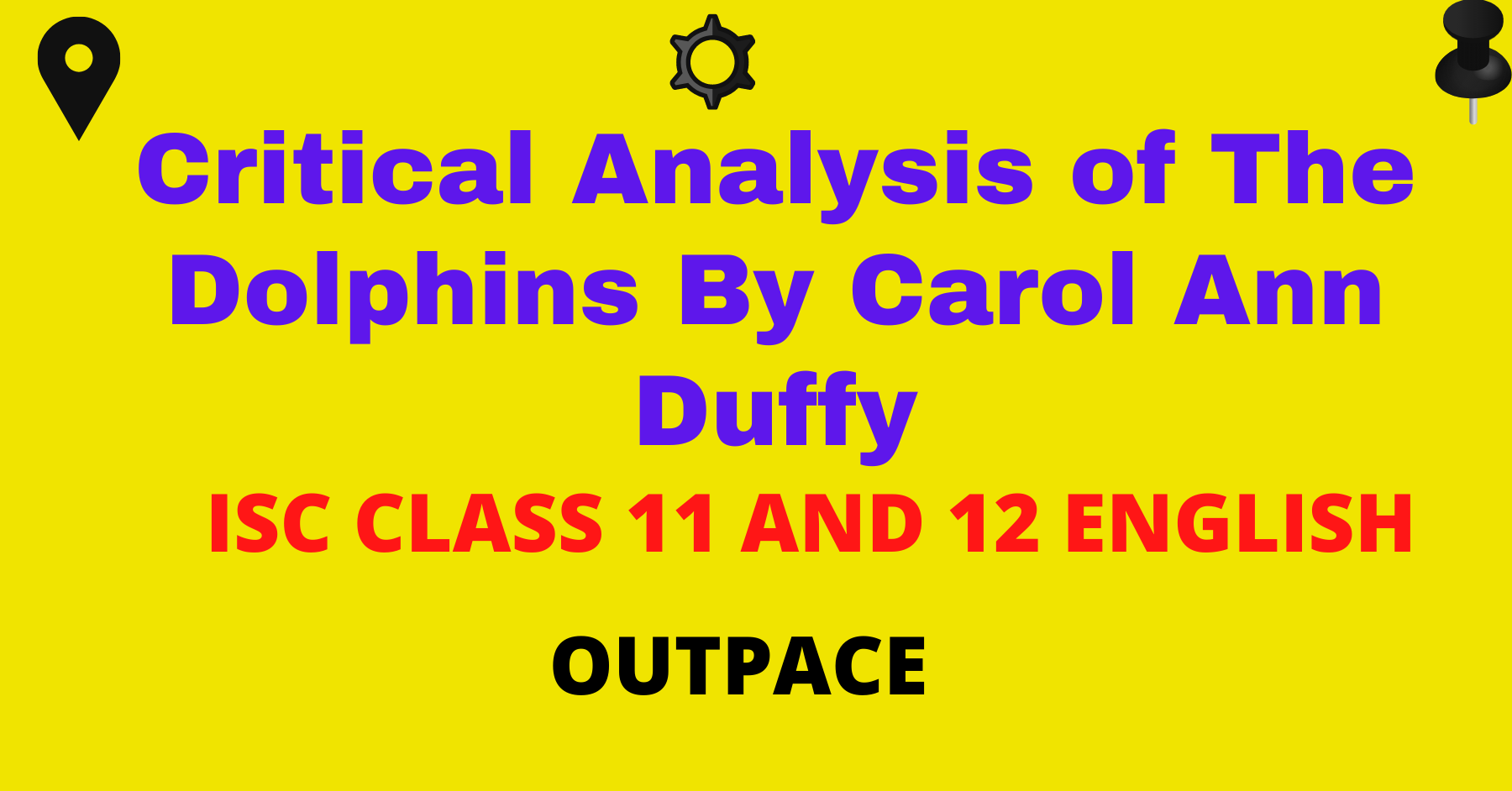

LINE BY LINE ANALYSIS OF THE POEM
Stanza One
Sunset and evening
star,
And one clear call for me!
The poem opens on a serene and gentle remark. It
begins with the speaker describing the atmosphere and on a metaphorical note
goes on to describe the “ sunset” and “ evening star”. As soon as the sun
descends, the light of the evening sun–
planet Venus surges to act like a beacon light to the seafarers. The
speaker says that he hears a call for him- ‘ one clear call’ to set on the
voyage. This “ clear call” can be interpreted as the call of the impending
death. He hopes that when he starts his trek, his vessel will clear the
sand-bar smoothly.
And may there be no
moaning of the bar,
When I put out to sea,
The speaker aspires to gently pass over the harbour, one
without any turbulence. The wishes that his departure be without moaning “ no moaning of the bar”. Here, the poet has symbolised “bar” as the demarcation between
the event of life and death. “ put out to sea” signifies the commencement of
the trail of the cycle of life and death.
Stanza Two
But such a tide as
moving seems asleep,
Too
full for sound and foam,
In
the second stanza, the poet wants a sea should be such as it makes the journey
smooth. The lack of sound and foam signifies that the ship
is in the deep sea and that the trail has not merely begun but is nearing the end. The sea is so
deep that there will be hardly any sound and lofty waves. The tide is figurative
of the smooth and peaceful metamorphosis of the speaker from life to death.
When that which drew
from out the boundless deep
Turns again home.
The rhetorician then refers to the tides as “ When that
which drew from out the boundless deep/ Turns again home”. Here, he describes
the solemn journey of the soul to eternity just as the tide traces it’s way
back to the oceanic depth. A point to be noted here is that the continuous
cycle of birth and death is stretched symbolically. The soul goes to heaven so
that to return to the “ boundless depth” from which everyone came. Tennyson here
brings out the fact that the speaker wishes to die with his faith intact. He
wants to die without any doubt or fear.
Stanza Three
Twilight and
evening bell,
And
after that the dark!
Unlike
the first stanza where the poet heard “one clear call”, here he hears the sound
of an “ evening bell” at twilight. After twilight what he sees is nothing but “
the dark”. The evening bell is the traditional death knell of a bell to signal that
one has perished. This is a close metaphor to the approaching death of the
speaker
And may there be no
sadness of farewell,
When I embark;
The
speaker wants no sad departure. He does not want himself and others to be
unhappy. Sensing his dead, he wants “ no sadness” be left behind when he will
embark on a new trek to eternity.
Stanza Four
For
tho’ from out our bourne of Time and Place
The
flood may bear me far,
In the
concluding stanza, there is a glimpse of the Victorian Era where the fact of
going beyond the “ Time” and “ Place” is stretched. The poet says that the sea
will take him from this finite world, with restraints to his distant
destination; “ The flood may bear me far”.
I hope to see my Pilot
face to face
When
I have crost the bar.
Ultimately,
the poet hopes to see the Pilot after he as “ crost the bar”. The word “
Pilot” is capitalised which specifies that the Pilot has been compared to God
and that in this journey of life, the God in the form of Pilot steers the ship
of life through troubled waters to the harbour. The faith in God is accepted
readily by him at the end.





